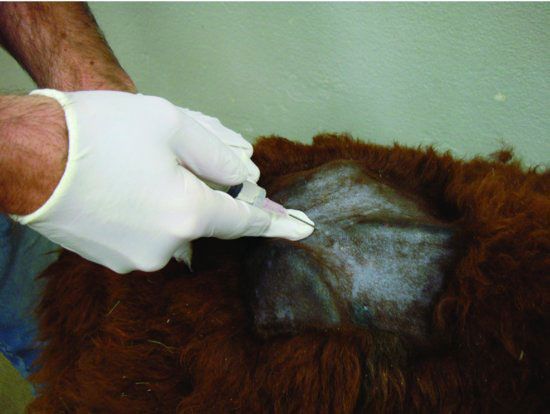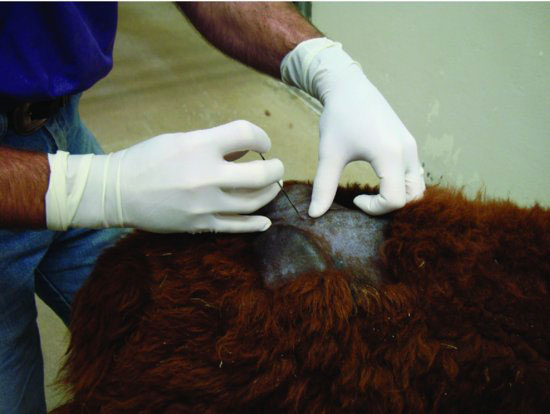Figure 22.2 One to two milliliters of 2% lidocaine are injected into the subcutaneous tissues en route to the epidural space.

Insert the needle through the skin and approximately 1 cm into the soft tissues just caudal to the last palpable dorsal spinous process of the lumbar vertebrae (Figure 22.3). Fill the hub of the needle with anesthetic solution but do not secure the syringe to the hub yet (Figure 22.4). Advance the spinal needle toward the epidural space slowly. Watch for disappearance of the anesthetic solution from the hub of the needle. If spinal fluid is noted to flow from the needle, it is positioned too deeply, and should be withdrawn slightly into the epidural space. (See Figure 22.5.) Attach the syringe with the anesthetic solution and inject the solution into the epidural space. The epidural space is recognized when little to no resistance is encountered while injecting. Finally, remove the needle. If spinal fluid was seen during the procedure, the volume of injection should be reduced by 50% so that untoward effects of the anesthetic do not occur.
Figure 22.3 The spinal needle is placed through the skin prepared to be advanced toward the epidural space. Be sure the bevel of the needle faces forward. Do not insert the needle too deep. (See the text for further discussion.)

Stay updated, free articles. Join our Telegram channel

Full access? Get Clinical Tree


